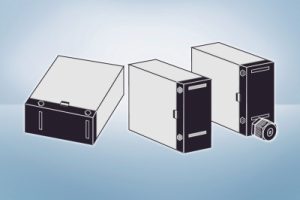Exploring the World of Sensor Enclosures: Enhancing Precision and Protection
In the realm of industrial automation and electronic components, the importance of safeguarding sensitive sensors cannot be overstated. A critical aspect of this protection lies in the sensor enclosure, a specialized casing designed to shield sensors from environmental factors that could compromise their functionality. Let’s delve into the intricacies of sensor enclosures and understand how they contribute to the reliability and longevity of these vital components.
Understanding the Purpose of Sensor Enclosures
Ensuring Precision with Sensor Enclosures
Precision is paramount in the realm of sensors, and the sensor enclosure plays a pivotal role in maintaining it. These enclosures act as a robust shield against external influences such as dust, moisture, and harsh weather conditions. By providing a protective barrier, sensor enclosures contribute to the accuracy and consistency of sensor readings, ensuring that the data collected is reliable.
Types of Sensor Enclosures
Diverse Applications of Sensor Enclosures
Sensor enclosures come in a variety of designs, each tailored to meet specific environmental demands. From sealed enclosures for harsh outdoor conditions to ventilated enclosures for controlled indoor environments, the options are diverse. Choosing the right type of enclosure depends on the application and the challenges posed by the surroundings.
Features and Materials in Sensor Enclosures
Robust Construction for Optimal Performance
The construction of a sensor enclosure is a crucial factor in determining its effectiveness. These enclosures are typically crafted from durable materials such as stainless steel, aluminum, or high-quality plastics. The choice of material depends on the level of protection required and the environmental conditions the sensors will face.
Benefits of Utilizing Sensor Enclosures
Enhancing Longevity and Reliability
Investing in high-quality sensor enclosures pays dividends in terms of the longevity and reliability of sensors. These enclosures act as a barrier against corrosive elements, preventing damage and ensuring the sensors function optimally over an extended period. This not only reduces maintenance costs but also enhances the overall efficiency of industrial processes.
Choosing the Right Sensor Enclosure for Your Application
Factors to Consider When Selecting a Sensor Enclosure
The selection of a sensor enclosure should be a meticulous process, considering the specific needs of the application. Factors such as the level of environmental exposure, temperature fluctuations, and the type of sensors housed within the enclosure should all be taken into account. Consulting with experts in the field can help in making informed decisions that align with the unique requirements of the application.
Exploring Options at Bernic: A Hub for Sensor Enclosures
Bernic’s Array of Sensor Enclosures
Bernic stands out as a reliable source for a wide range of sensor enclosures designed to meet diverse industrial needs. With a commitment to quality and precision, Bernic’s offerings cater to various applications, ensuring that clients find the perfect enclosure to safeguard their valuable sensors.
In conclusion, the world of sensor enclosures is a critical aspect of ensuring the optimal performance and longevity of sensors in diverse industrial settings. By understanding the purpose, types, and benefits of these enclosures, businesses can make informed decisions to protect their investments and maintain the precision of their sensor-based systems. Explore the offerings at Bernic to discover the ideal sensor enclosure for your specific application needs.





